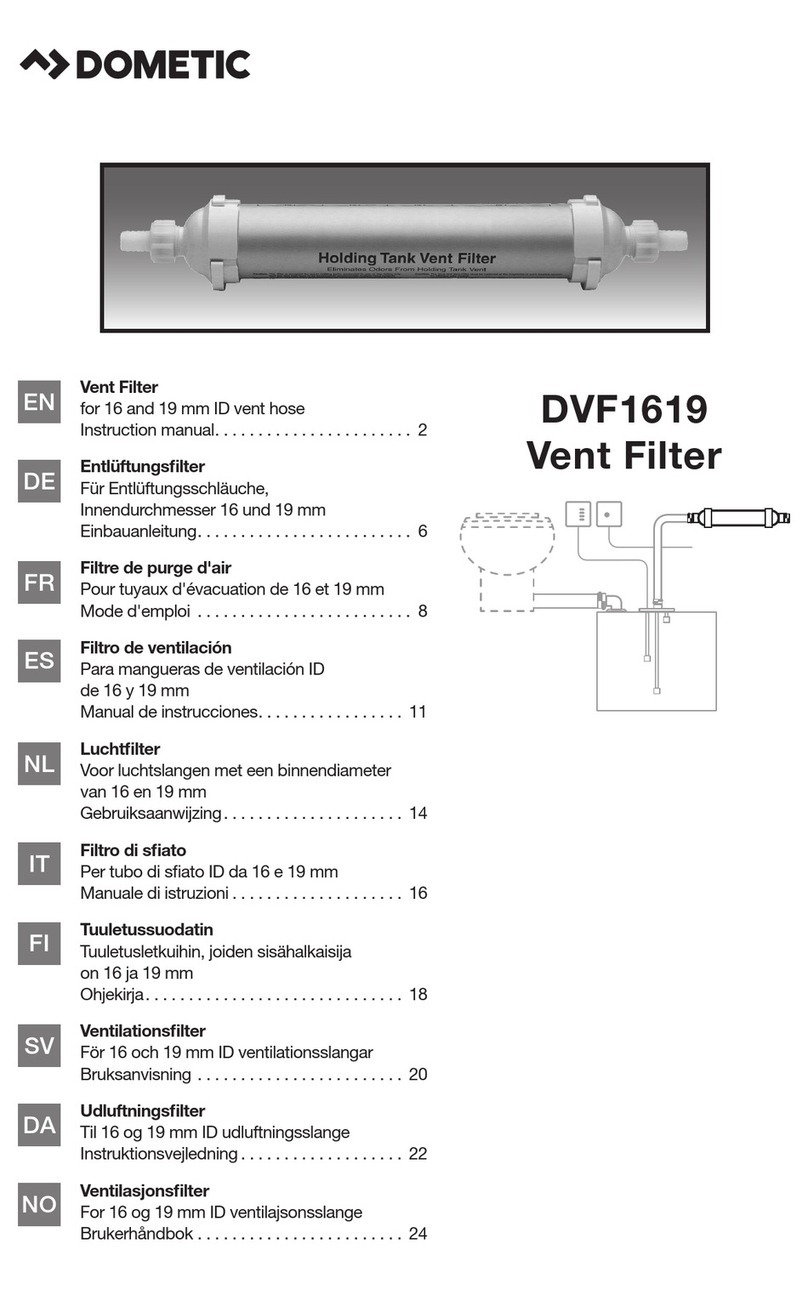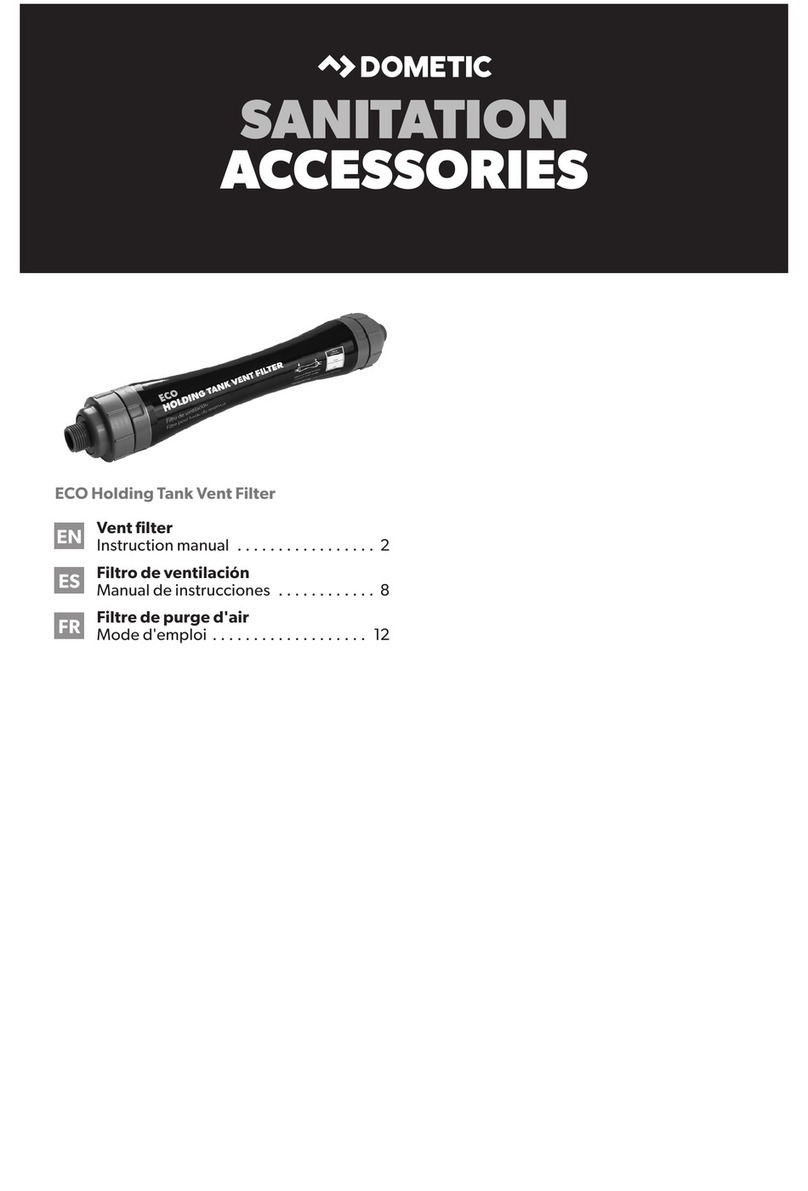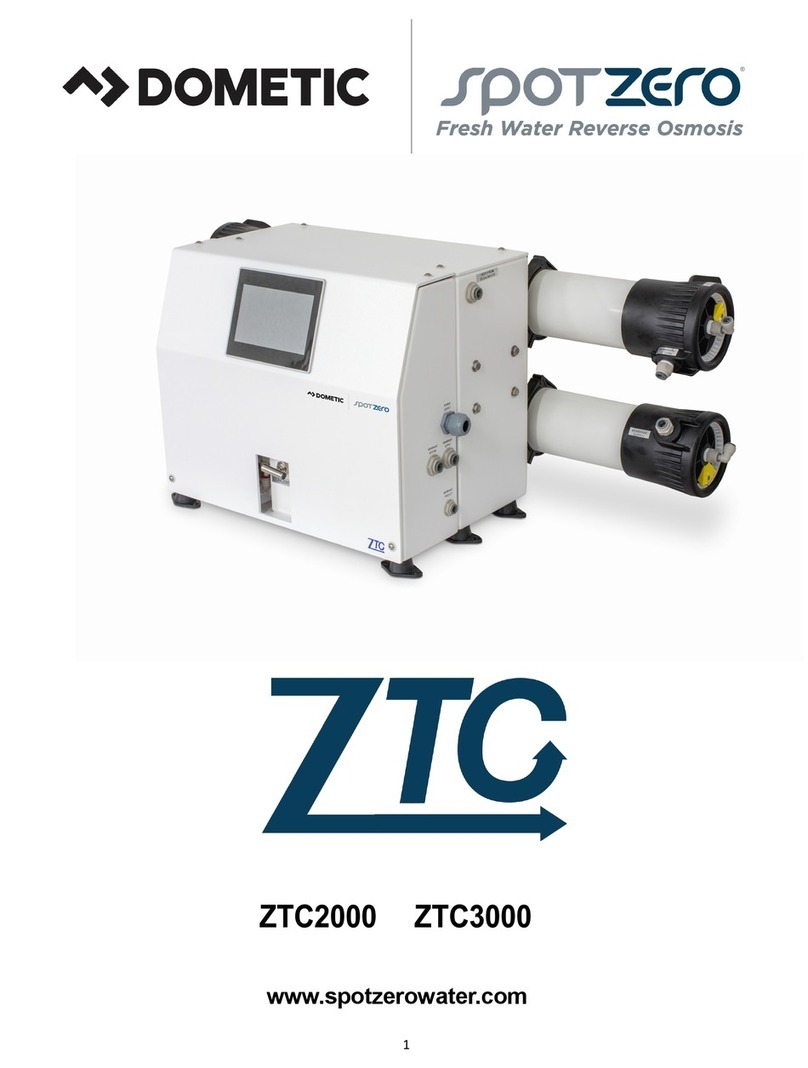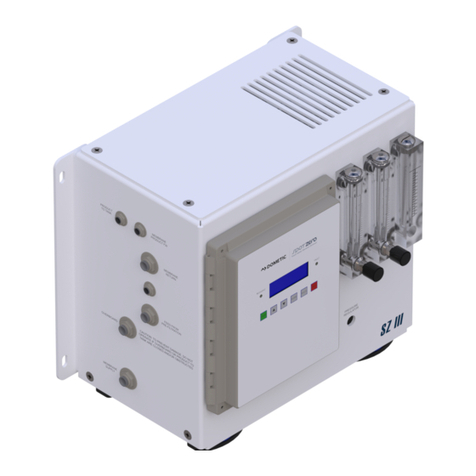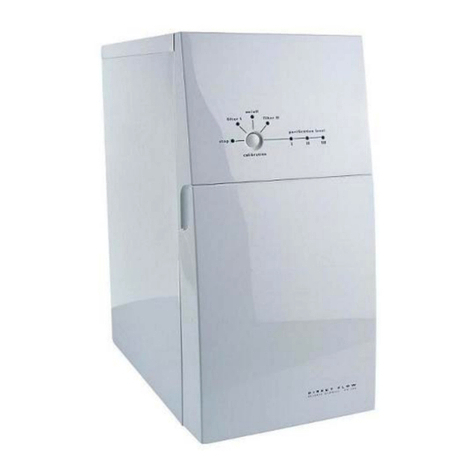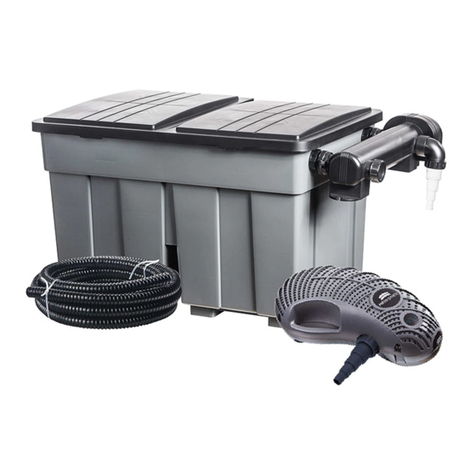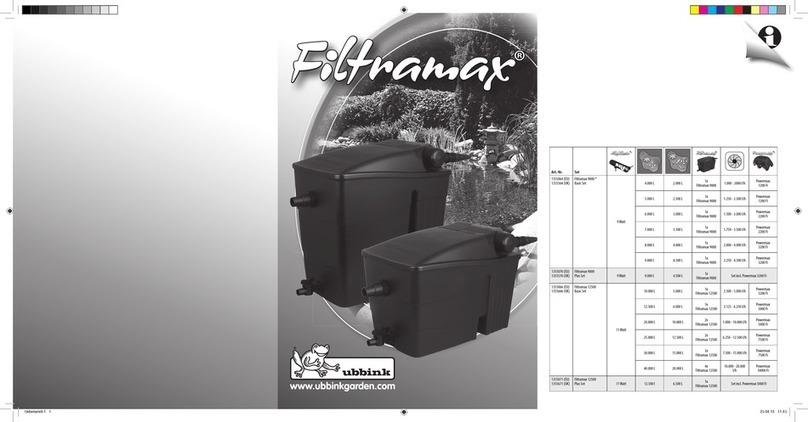- 4 -
CHILD SAFETY
Do not let children play with the water purier.•
Never leave packaging material lying around so that children•
can play with it.
USE
The water purier is intended to produce water for applica-•
tions that require puried water.
Puried water should only be used when the control panel’s •
lights II or III (purication levels) are lit. It can take up to 60
seconds before the water purier indicates good water quality.
The water purier must be connected to water and electricity •
in order for the automatic ushing system to work. Automatic
ushing takes place approximately every 12 hours.
The top of the water purier should not be used as a place for •
storing anything.
Do not use puried water in aluminium vessels. There is a •
risk of corrosion of the vessel and a higher concentration of
aluminium in the puried water.
Do not change or modify the water purier in any way. This •
can result in personal injury and/or damage to property which
is not covered by any warranty.
If the water purier is to be disconnected from water and •
electricity for an extended period (several days), it should be
stored, see “STORAGE” in the user manual. This also provides
protection against freezing.
The water purier may not be used without prelters (un-•
less otherwise specied in maintenance procedures, see user
manual). It could be seriously damaged.
If the water purier contains chemicals from maintenance •
procedures, it must be ushed before the puried water may
be used, see “FLUSHING” in the user manual.
Once a month, check that the connections are watertight.•
Leaks outside the water purier cannot be detected by the
internal safety system. If leakage occurs, immediately switch
off the water supply and break the current to the product by
pulling the plug out of the wall socket or remove the correct
fuse in the electrical distribution board.
If the mains lead has been damaged in some way, it must be•
replaced by a qualied person to avoid damage or injury.
REGULAR CARE OF THE WATER PURIFIER
Once a month, check that all the connections are in place and•
are watertight. Wipe off any condensation that has collected
on the base plate.
Make sure that you always replace prelters in time. The •
lifetime of the prelters depends on your feed water.
Depending primarily on the hardness of the feed water and•
its content of microorganisms, the water purier should be
cleaned when the ow is reduced or at least every 6 months
and disinfected if the water smells or tastes bad.
SAFETY INFORMATION
RO400A/RO400B
The model name for RO400A is actually RO400 (without
letter). The A is added in this document to distinguish from
RO400 when used as a family name.
RO400A and RO400B are domestic models. Most functions
and features are however common with the commercial (C-)
models.
The water purier is designed to produce the quantity of wa-•
ter normally required for cooking, drinks, washing dishes and
general household duties.
The water purier may only be installed with the drinking •
water faucet supplied with the product.
The water purier must not be connected to supply the whole •
dwelling with water. Neither may the water purier be in-
stalled in connection with valves, switches or tanks. Be aware
of the risk of corrosion in water pipes and water heaters.
Any faults that arise in a water purier that has been incor-•
rectly installed are not covered by any warranty.
RO400B/RO400BC/RO400BCV
(BRACKISH MODEL)
Brackish (B-) models are used when the inlet water has a high
content of salt, more than the maximum level for normal, sweet
water models, up to a maximum of 7,500 ppm (mg/l).
It might be wise to chose the brackish also if the salt content is
just below limit, if it is known that the value varies widely over
time.
Sea water cannot be puried with these models, even if the
purication technology is the same.
Especially important remarks for the brackish models:
It is very important that the purier is always connected to •
water and electricity. Brackish water often contains organic
materials that will increase the bacteria growth. To prevent
this an automatic ush is performed approximately every 12
hour.
Concerning the installation, the material in all components at•
the inlet- and drain connections must be resistant to corrosion,
for example in plastic or stainless steel.






